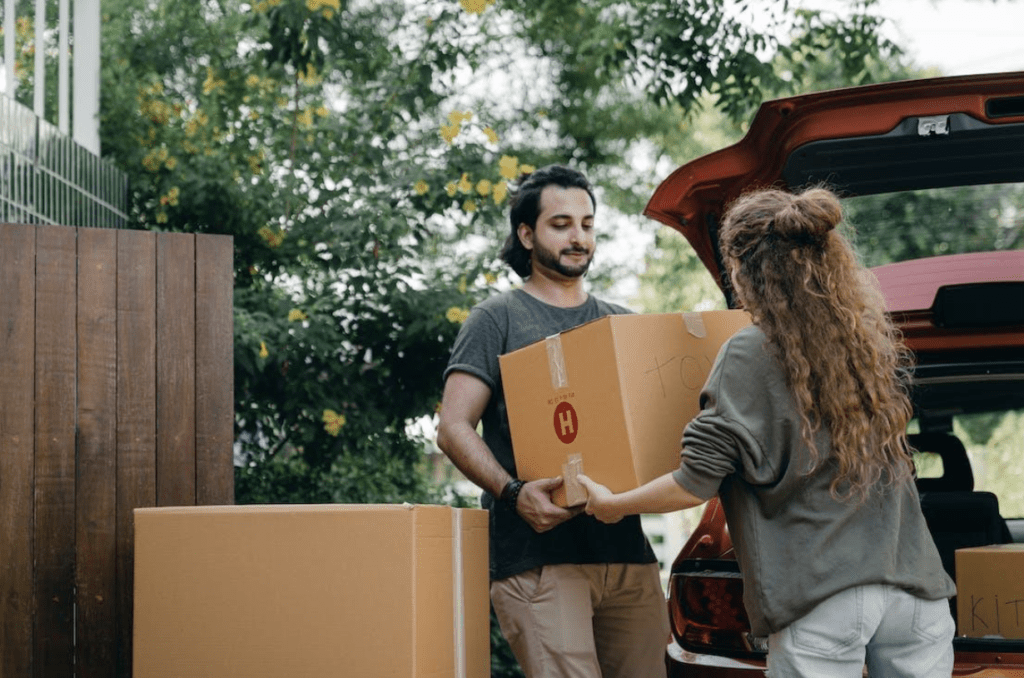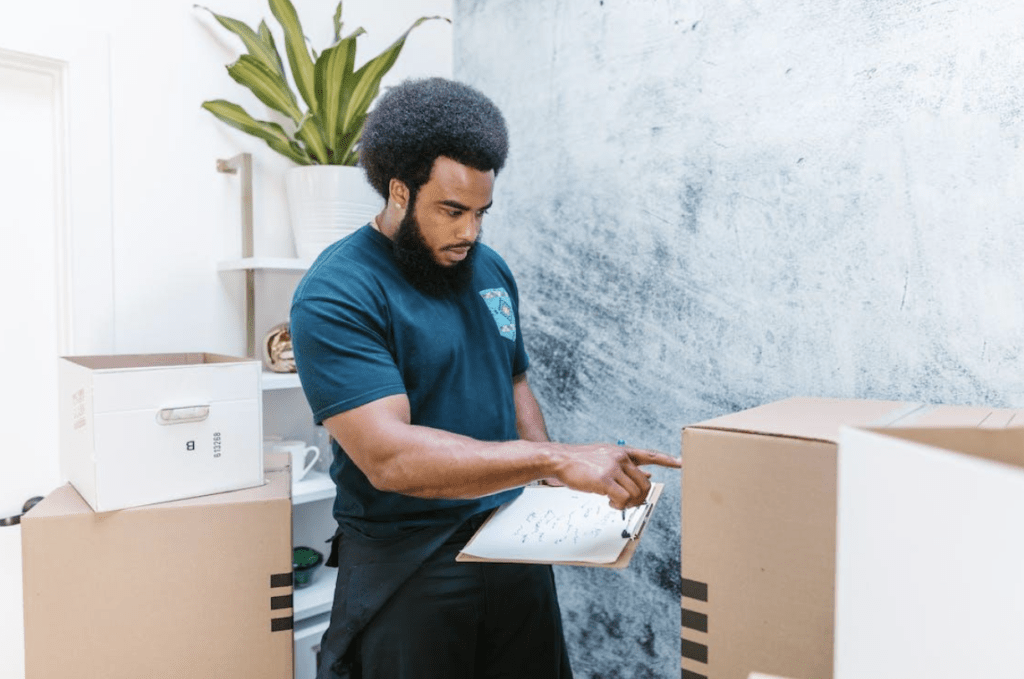
Moving to a new home is a big task, and it’s easy to overlook how our actions can impact the environment. One key aspect where we can make a real difference is packing. Traditional packing methods often involve many disposable materials that end up in landfills. But what if we could change that? That is where eco-friendly packing comes into play. It’s not just about moving. It’s about moving forward with care for our planet. By choosing sustainable materials and methods, we can significantly reduce waste during our move. This guide is designed to help you do just that. Whether you’re a seasoned mover or this is your first big move, these simple yet effective tips will show you how to pack more kindly to our earth.
Understanding Eco-Friendly Packing
Eco-friendly packing is all about choosing materials and methods that reduce environmental harm. That implies selecting materials that are either biodegradable, recyclable, or reusable. It’s not just about the materials themselves but also how we use them. Efficient packing reduces the need for excessive materials, ultimately contributing to less waste.
The Impact of Traditional Packing
Traditional packing relies heavily on plastic wrap, foam peanuts, and new cardboard boxes. These materials can take hundreds of years to decompose in landfills. The production of these materials also consumes energy and resources. By switching to eco-friendly packing, we can significantly reduce this environmental burden.
Switching to Sustainable Alternatives
It’s not difficult to make the switch to more sustainable packing options. In truth, Helix Move Annandale recommends using recycled cardboard boxes, biodegradable packing peanuts, and old newspapers or linens for cushioning. These alternatives are just as effective as traditional materials but are much kinder to the planet. As a bonus, using containers you already own, like suitcases and bins, can further minimize waste.
Benefits of Eco-Friendly Packing
Adopting eco-friendly packing methods isn’t just good for the environment; it often proves more cost-effective in the long run. Reusable materials might have a higher upfront cost, but they can be used multiple times, saving money over time. More importantly, by choosing eco-friendly options, you’re playing a part in preserving our planet for future generations.
Start with a Plan: Organizing Your Eco-Friendly Move
When it comes to an eco-friendly move, planning is key. A well-thought-out plan makes your move smoother and ensures you stay true to sustainable practices. Let’s dive into how you can organize your eco-friendly move effectively.
Declutter Responsibly
Before you even start packing, take time to sort through your belongings. Ask yourself what you need to take with you. That is the perfect opportunity to declutter. Remember, the less you move, the fewer packing materials you’ll need. Donate items in good condition to local charities or consider selling them online. For things that are no longer useful, look for recycling options rather than just throwing them away.
Organize Items by Category
Organize your belongings by category – clothes, books, kitchenware, etc. That makes it easier to pack things using eco-friendly materials. For example, soft items like clothes can be packed in suitcases or used as padding for more fragile items. Organizing by category also helps you keep track of how much you’re packing and moving, allowing you to minimize waste.
Plan for Packing Materials
Once you’ve decluttered and organized, estimate the necessary packing materials. Go for recycled boxes and biodegradable packing materials. If you have old newspapers, linens, or towels, these can be excellent for wrapping and protecting items. Doing so can avoid the last-minute rush and the temptation to use non-eco-friendly options.
Label Wisely
As you pack, label your boxes clearly. That helps with unpacking and ensures you can find essentials easily during and after the move. A well-labeled box means less rummaging and, consequently, less potential damage to items, reducing the need for extra packing material.
Choosing Sustainable Packing Materials
Selecting the right packing materials is crucial for an eco-friendly move. It’s not just about what’s convenient but what’s sustainable. Here’s a guide to help you choose materials that align with green strategies for your move.
Eco-Friendly Materials to Consider
- Recycled Cardboard Boxes: Look for boxes made from recycled material. They are just as sturdy as new ones and can often be found at local stores or through moving companies.
- Biodegradable Bubble Wrap: Instead of traditional plastic bubble wrap, use biodegradable versions made from recycled materials. They offer the same protection without the environmental cost.
- Cornstarch Packaging Peanuts: A great alternative to Styrofoam, these peanuts are biodegradable and compostable, making them a green choice for cushioning items.
- Reusable Moving Bins: Consider renting plastic moving bins. They’re durable and reusable, eliminating the need for disposable cardboard boxes.
- Old Newspapers and Linens: Utilize newspapers, towels, and linens for wrapping and cushioning items. It’s a great way to repurpose your existing items and reduce waste.
- Green Packing Tape: Look for packing tape made from sustainable materials. Some tapes are made from recycled paper or have a biodegradable adhesive.
- Fabric Moving Pads: Instead of disposable padding, use fabric moving pads that can be reused for future moves.

Benefits of Eco-Friendly Materials
Using these materials not only supports green strategies but also can be cost-effective. Many of these items can be sourced for free or at a low cost, and their reusable nature means you can save money in the long term. More importantly, choosing these materials contributes to a healthier planet.
Innovative Packing Tips for a Greener Move
Moving is a great opportunity to think creatively and sustainably. With a few innovative packing tips, you can make your move greener without compromising efficiency or safety. Let’s explore how you can pack smarter and more eco-friendly.
Use Household Items as Packing Aids
Your home is full of items that can double as packing aids. For instance, wrap your dishes and fragile items in T-shirts or towels instead of bubble wrap. Socks are great for cushioning small breakables or filling gaps in boxes. It’s an approach that saves money and reduces the packing material needed.
Eco-Friendly Packing Tips: Minimize Packing Material Usage
Think about how you can use less material without damaging your belongings. One way is to pack tightly and securely, efficiently using the space in boxes. Filling spaces with soft items like clothes or bedding means you need less additional cushioning material. This method is especially useful for fragile items that need extra protection.
Efficiently Utilizing Space
Packaging efficiency goes a long way in making your move smoother and more eco-friendly. Using space wisely reduces the need for excessive packing materials and transportation resources. Here’s how you can achieve this, even when it comes to specific tasks like packing delicate items, such as plants.
Packing Tips for Space Optimization
Begin by assessing your items. Larger items should form the base in moving vehicles, with lighter items on top. Use soft items (bedding or clothes) to fill gaps between more rigid objects. This approach not only protects your belongings but also maximizes the space used.
When packing your plants for the road, choose sturdy boxes that fit the pots snugly. Fill any extra space with soft packing materials to prevent movement and possible damage. It’s important to ensure that plants are secure yet easily accessible for care during the move.
Loading Your Moving Vehicle
Loading your moving vehicle is like playing a game of Tetris. Start with the heaviest boxes and furniture on the bottom, adding lighter boxes as you go up. Disassemble furniture where possible to make more room. Drawers can be left full if they aren’t too heavy, but ensure they are secured. Leave a little room for your plants to receive light and air without getting crushed. It’s also a good idea to keep them near the door or on top of other items for easy access.

Disposing of Packing Materials Responsibly
After a successful move, you’re often left with various packing materials. How you dispose of these items can significantly impact your eco-friendly packing efforts. Therefore, if you’ve used cardboard boxes, check if they’re still in good condition. Those can be flattened and stored for future use or offered to move others. For boxes that are no longer usable, recycling is the best option.
At the same time, biodegradable packing materials, such as cornstarch peanuts, can be composted. However, this is dependent on your local composting facilities’ guidelines. If you’ve used bubble wrap or other plastic-based materials, see if they can be recycled. Many communities have specific recycling rules for different types of plastics.
Repurposing Materials in Your New Home
Some packing materials can find a new life in your home, and upcycling can be key. Bubble wrap, for instance, can be kept for future packaging needs or used as insulation in your home. Fabric moving pads can be useful for DIY projects or even pet bedding.
Zero-Waste Approach Post-Move
Strive for a zero-waste approach after your move. Donate materials that you can’t use to local schools, art programs, or community centers where they might be used for projects. Contact local moving companies or community groups to see if they can use your leftover materials.
Engaging Professional Eco-Friendly Movers
Sometimes, the best way to ensure your eco-friendly move is to hire professionals specializing in green strategies for low-waste moving plans. However, when searching for a moving company, prioritize those that emphasize sustainability. Look for movers who use biodiesel trucks, offer reusable moving containers, or have a clear waste-free policy. You can often find this information on their website or by contacting them directly.
At the same time, don’t hesitate to ask specific questions about their eco-friendly practices. Inquire about the types of packing materials they use, their policy on fuel efficiency, and how they handle waste. Understanding their approach will help determine if they align with your eco-friendly moving goals.

Conclusion
As we wrap up, remember that eco-friendly packing is more than just a choice; it’s a meaningful step towards a more sustainable future. Adopting the shared tips can significantly reduce your environmental impact during your move. Every small action counts. Together, these steps can make a big difference. Embrace this opportunity to move to a new home and move forward with a commitment to our planet.
